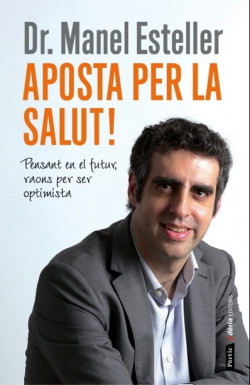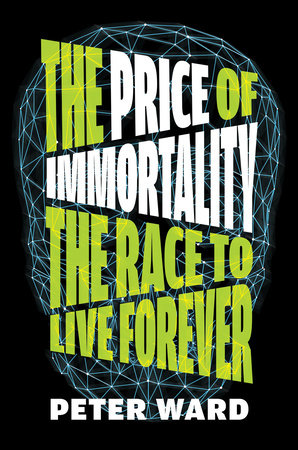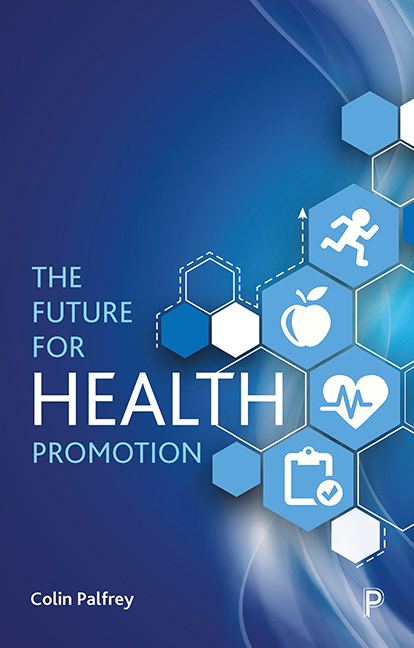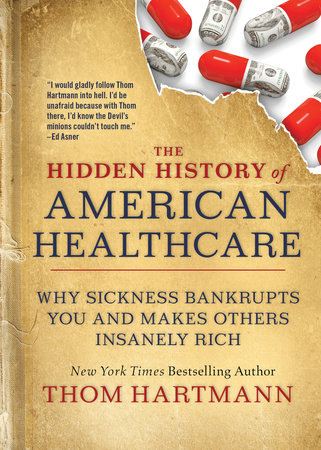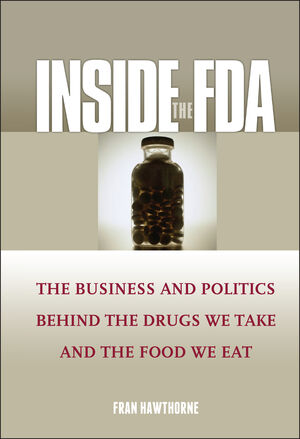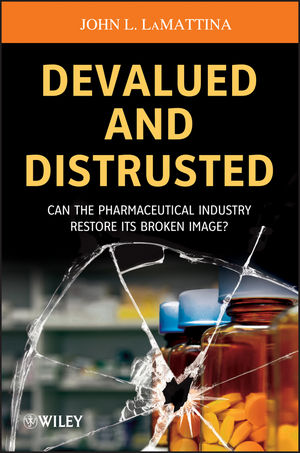Healthy Eating and Active Lifestyles
17 de juny 2022
16 de juny 2022
Unfair War
Who Should Die?. The Ethics of Killing in War
This volume collects in one place the most influential and groundbreaking philosophical work being done on the question of killing in war, offering a "who's who" of contemporary scholars debating the foundational ethical questions surrounding liability to harm. In ten essays, it expands upon and provides new and updated analyses that have yet to be captured in a single work. Essays explore questions such as: Are some soldiers more deserving of death than others? Should states allow soldiers to conscientiously object (to opt out of war) on a case-by-case basis? Can a theory of rights best explain when it is permissible to kill in war? When are we allowed to violently resist oppression that is itself nonviolent? Is there anything wrong with targeting people with autonomous weapons?
Who Should Die? Editors' Introduction
Chapter 1: "Liability to Deadly Force in War"
Leonard Kahn
Chapter 2: "Jus in Bello: Actual vs. Hypothetical Contract"
Yitzhak Benbaji
Chapter 3: "Do Some Soldiers Deserve to Die More Than Others? Selective
David Whetham
Chapter 4: "Defensive Liability: Four Common Mistakes"
Kai Draper
Chapter 5: "Fighting for One's Self"
Michael Robillard
Chapter 6: "An Axiomatic Theory of Just War: Forfeiture Theory"
Stephen Kershnar
Chapter 7: "Dignity, Self-Respect, and Bloodless Invasions"
Saba Bazargan
Chapter 8: "What is the Moral Problem with Killer Robots?"
Susanne Burri
Chapter 9: "Distributing the Cost of Rescue"
Lars Christie
Chapter 10: "Legality, Justice, and the War on Terrorism"
Lionel K. McPherson
15 de juny 2022
A new theory of patient rights?
Pharmaceutical Freedom. Why Patients Have a Right to Self Medicate
Patients rights or wrongs?. A controversial book.
14 de juny 2022
13 de juny 2022
Sharing health risks
Mutualism and health care. Hospital contributory schemes in twentieth-century Britain
The British hospital contributory schemes movement was described in 1936 as ‘one of the most outstanding examples of social organisation during the last two or three decades’.1 Contributory schemes had flourished in response to the considerable financial challenges faced by the voluntary hospitals in the twentieth century, although their roots lay in the nineteenth-century Hospital Saturday and Sunday funds (described in chapter 2).2 The aim was to elicit the support of working-class subscribers (people whose incomes were insufficient for them to be able to pay for treatment by a private medical practitioner) in the form of regular contributions to hospital finances. A small weekly contribution was levied, typically 2d or 3d, or a penny in the pound of wages, mostly through payroll deductions. The funds raised were either handed over directly to individual hospitals or pooled for distribution between groups of hospitals. The principal benefit of membership was free treatment in a voluntary hospital, without having to pass the means test set by the hospital almoner
12 de juny 2022
09 de juny 2022
Longevity medicine scams
The Price of Immortality. THE RACE TO LIVE FOREVER
Peter Ward immerses himself into an eccentric world of startups, scam artists, scientific institutions, and tech billionaires to deliver this deeply reported, nuanced, and sometimes very funny exploration of the race for immortality — and the potentially devastating consequences should humanity realize its ultimate dream.
08 de juny 2022
Valuing health
Measuring and Valuing Health Benefits for Economic Evaluation
This book addresses the theoretical and practical considerations in the measurement and valuation of health benefit with empirical examples and applications to help clarify understanding and make relevant links to the real world. It includes a glossary of key terms and provides guidance on the use of different methods and instruments. This updated edition provides an-up-to date review of the theoretical basis of the QALY; the definition of health; the techniques of valuation (including ordinal); the modelling of health state values (including mapping between measures); a detailed review of generic preference-based measures and other instruments for obtaining health state utility values (with recent developments); cross-cultural issues (including the disability-adjusted life year); the aggregation of QALYs; and the practical issues surrounding the use of utility values in cost-effectiveness models. The book concludes with a discussion on the way forward in light of the substantial methodological differences, the role of normative judgements, and where further research is most likely to take forward this fascinating component of health economics.
07 de juny 2022
06 de juny 2022
09 de maig 2022
Pharma, big pharma (10)
Inside the FDA: The Business and Politics Behind the Drugs We Take and the Food We Eat
Inside the FDA takes a closer look at the practices, people, and politics of this crucial watchdog in light of the competing pressures and trends of modern society, revealing what the FDA is supposed to do, what it actually does-and fails to do-who it influences, and how it could better fulfill its mandate. The decisions that the FDA makes are literally life and death. Inside the FDA provides a sophisticated account of how this vitally important agency struggles to balance bureaucracy and politics with its overriding mission to promote the country's health.
08 de maig 2022
Pharma, big pharma (9)
Devalued and Distrusted: Can the Pharmaceutical Industry Restore its Broken Image?
Starting with "4 Secrets that Drug Companies Don't Want You to Know," Devalued and Distrusted provides a fact-based account of how the pharmaceutical industry works and the challenges it faces. It addresses such critical issues as:
- Why pharmaceutical R&D productivity has declined
- Where pharmaceutical companies need to invest their resources
- What can be done to solve core health challenges, including cancer, diabetes, and neurodegenerative diseases
- How the pharmaceutical industry can regain public trust and resuscitate its image
Our understanding of human health and disease grows daily; however, converting science into medicine is increasingly challenging. Reading Devalued and Distrusted, you'll not only gain a greater appreciation of those challenges, but also the role that the pharmaceutical industry currently plays and can play in solving those challenges.
A continuació, es presenta un resum detallat del llibre "Devalued and distrusted: can the pharmaceutical industry restore its broken image?" de John L. LaMattina, PhD.
El llibre "Devalued and distrusted: can the pharmaceutical industry restore its broken image?" examina les percepcions públiques i les realitats de la indústria farmacèutica, especialment en relació amb la investigació i el desenvolupament (R+D). L'autor, John L. LaMattina, antic president de Global R+D a Pfizer, va escriure el llibre per abordar les idees errònies sobre la indústria. El llibre s'estructura en sis capítols, començant per abordar les crítiques públiques sovint sintetitzades en "secrets" que les companyies suposadament volen ocultar, i passant per les qüestions d'R+D, les àrees terapèutiques clau i la restauració de la imatge.
Introducció: La inspiració per al llibre va venir en part d'una aparició de l'autor a The Dr. Oz Show, on es va presentar un segment titulat "Els Quatre Secrets que les Companyies Farmacèutiques No Volen que Sapigueu". Aquest enfocament, que implicava que les empreses fabricaven compostos insegurs i amagaven els perills, va sorprendre l'autor, que esperava un debat més equilibrat. L'autor assenyala la paradoxa que es van plantejar preocupacions sobre l'orlistat, un fàrmac genèric, tot just al començament del segment.
Capítol 1: Els Quatre Secrets que les Companyies Farmacèutiques No Volen que Sapigueu: L'autor aborda directament les quatre afirmacions crítiques que sovint es fan sobre la indústria.
- Les companyies farmacèutiques infravaloren els efectes secundaris perillosos: Tot i que la FDA (Food and Drug Administration) té un sistema rigorós per aprovar nous medicaments basat en dades preclíniques i clíniques (NDA - New Drug Application) que inclouen estudis en animals i humans per avaluar l'eficàcia i la seguretat, de vegades els fàrmacs aprovats es descobreixen més tard que tenen efectes secundaris més greus dels coneguts. Això pot passar perquè els assajos clínics per a una NDA típicament inclouen de 2.000 a 20.000 pacients, mentre que milions de pacients prendran el fàrmac una vegada aprovat, fet que pot revelar efectes secundaris rars (per exemple, 1 de cada 50.000). No obstant això, tant les empreses (amb programes de farmacovigilància) com la FDA (amb l'Adverse Event Reporting System) monitoren activament la seguretat un cop el fàrmac és al mercat. L'autor argumenta que la suggerència que els fàrmacs genèrics són inherentment més segurs per haver estat al mercat durant molt de temps és una simplificació excessiva. Fàrmacs antics com l'aspirina, àmpliament utilitzada durant més d'un segle, tenen riscos coneguts, incloent morts per sagnat intern.
- Les companyies farmacèutiques controlen gran part de la informació que rep el vostre metge: Crítics com el Dr. John Abramson afirmen que la indústria financia al voltant del 85% dels assajos clínics i proporciona una versió "seleccionada, filtrada" de les dades als metges. Tot i que les companyies financen els assajos, aquests són executats per metges independents en centres acadèmics. A més, els assajos clínics han de ser registrats al lloc web governamental ClinicalTrials.gov, augmentant la transparència de les activitats clíniques. Els resultats dels estudis també s'han de posar a disposició del públic de manera oportuna. La preocupació sovint se centra en la no publicació de tots els resultats en revistes mèdiques, especialment els estudis negatius. L'autor argumenta que no tots els estudis mereixen publicació en revistes principals, especialment aquells amb alts efectes placebo com en trastorns psiquiàtrics, i que això no és necessàriament "amagar dades", sinó una decisió editorial. No obstant això, reconeix que la crítica sobre la puntualitat en la publicació dels resultats a ClinicalTrials.gov és vàlida i perjudica la credibilitat de la indústria.
- Sovint us prescriuen fàrmacs que no necessiteu: Aquesta afirmació es vincula amb el concepte de "malaltia inventada" (disease mongering). L'autor utilitza l'exemple de les estatines. Argumenta que, basant-se en estudis recents com l'Heart Protection Study (HPS), si la dieta i l'exercici no resolen completament els problemes de salut i el pacient té factors de risc de malaltia significatius, la prescripció d'una estatina no és "malaltia inventada". L'estudi HPS va demostrar que la simvastatina reduïa els esdeveniments vasculars majors i era segura durant més d'una dècada. La discussió sobre la niacina posa de manifest que un fàrmac antic (utilitzat durant 56 anys) i àmpliament utilitzat (per milions) no garanteix seguretat o eficàcia, i que els resultats d'estudis a llarg termini com l'AIM-HIGH poden qüestionar el seu valor en comparació amb les estatines.
- Les drogues apunten als símptomes, no a la causa: L'autor considera que aquesta afirmació és simplement falsa. Ofereix exemples de fàrmacs que tracten la causa, com els antibiòtics (maten bacteris), els fàrmacs per al VIH/SIDA (controlen la malaltia), els tractaments per al càncer, els ajuts per deixar de fumar (citisin/Tabex, Chantix/vareniclina), i fins i tot Viagra. També defensa el tractament de la pèrdua òssia (osteoporosi), assenyalant que és un problema real que s'ha de tractar abans que sorgeixin els símptomes.
Capítol 2: Què ha passat amb la productivitat d'R+D?: La productivitat en la recerca i desenvolupament farmacèutic ha disminuït per diverses raons.
- Impacte de les fusions en la productivitat d'R+D: Les fusions de grans empreses tenen conseqüències socials negatives en els empleats, causant preocupació per la seguretat laboral, la continuïtat dels projectes i la possible reubicació. Aquesta incertesa i el període de presa de decisions (que pot trigar un any o més) perjudiquen la moral i la productivitat individual. Les fusions poden retardar significativament l'aparició de nous fàrmacs generats per la nova entitat (pot trigar deu anys o més).
- Requisits augmentats de la FDA per a les NDA: La FDA ha augmentat els estàndards d'aprovació, particularment per a fàrmacs per a malalties cròniques com l'obesitat i la diabetis. L'exemple d'Avandia (per a la diabetis) mostra que, tot i que el fàrmac controlava el sucre en sang, preocupacions de seguretat cardiovascular van portar a la necessitat d'estudis a llarg termini per demostrar beneficis cardiovasculars. Aquests estudis d'outcome són extremadament costosos ($500 milions a $1 miliard o més) i de llarga durada, fent que l'R+D en aquestes àrees sigui d'alt risc financer. Tot i això, superar aquests obstacles significa que el fàrmac aprovat té un impacte fonamental en la malaltia, no només en els símptomes, i pot esdevenir un "blockbuster".
- Obstacles més alts establerts pels pagadors: Els pagadors, com les HMO, exigeixen dades sòlides de seguretat i eficàcia abans de reemborsar els costos dels fàrmacs. Les empreses utilitzen grups de farmacoeconomia per analitzar el valor potencial dels nous fàrmacs en comparació amb les teràpies existents, considerant l'efectivitat, la qualitat de vida i la reducció de costos per a la societat. L'estudi ALTITUDE de Novartis amb aliskerin il·lustra com un nou fàrmac per a la pressió arterial amb un nou mecanisme va fallar en un estudi a llarg termini, mostrant un augment d'esdeveniments adversos (ictus, problemes renals) quan es combinava amb altres fàrmacs comuns. Aquest fracàs subratlla el risc d'explorar nous mecanismes en àrees terapèutiques ben servides i la necessitat d'estudis clau abans de la presentació de l'NDA. Alguns estudis de comparació directa (head-to-head) amb fàrmacs competidors poden ajudar a diferenciar un nou producte.
Capítol 3: Àrees Terapèutiques Clau per Millorar la Salut: El llibre discuteix diverses àrees de focus per a l'R+D.
- Fibrosi Quística (FQ): L'aprovació de Kalydeco (ivacaftor) de Vertex es presenta com un gran avenç, que va trigar més de 20 anys des del descobriment del gen de la FQ. És un exemple de col·laboració exitosa entre la investigació acadèmica (NIH) i la indústria.
- Malalties del Cervell (CNS): La investigació en aquest camp és biològicament complexa i comporta riscos d'efectes secundaris. Hi ha preocupació que les grans empreses estiguin abandonant àrees com la depressió i l'esquizofrènia. La recerca sobre l'Alzheimer (AD) és particularment desafiant; tot i comprendre la causa (acumulació de proteïnes), els assajos clínics amb enfocaments prometedors (inhibidors de gamma secretasa, anticossos anti-amiloide com bapineuzumab) han trobat dificultats o han fracassat. L'autor assenyala que el progrés es fa amb experiments clau que orienten la recerca, no amb moments "aha" singulars.
- Malalties Cardiovasculars (MCV): Les MCV continuen sent un problema important, especialment amb l'augment de l'obesitat i la diabetis. Tot i l'èxit de les estatines en la reducció de l'LDL, l'exploració de nous enfocaments, com l'augment de l'HDL, va portar al desenvolupament d'inhibidors de CETP. No obstant això, l'inhibidor de Pfizer, torcetrapib, va fracassar en un gran assaig de fase 3 a causa de l'augment de la mortalitat general, posant en dubte la hipòtesi que l'augment de l'HDL per si sol seria beneficiós. Merck continua investigant amb anacetrapib.
- Diabetis: La creixent epidèmia de diabetis tipus 2 està lligada a l'obesitat. Els requisits augmentats de la FDA per demostrar beneficis cardiovasculars fan que l'R+D en diabetis sigui arriscada i costosa.
- Infeccions Bacterianes: Tot i la necessitat d'antibacterians, l'R+D en aquest camp és menys atractiva comercialment per a les grans empreses, ja que els antibiòtics s'utilitzen de forma aguda i l'ús de nous agents pot ser restringit per evitar la resistència. No obstant això, empreses biotecnològiques més petites estan desenvolupant nous antibiòtics per a soques resistents. L'autor suggereix que l'NIH (National Institutes of Health) podria ajudar a estimular la innovació en aquesta àrea.
Capítol 4: Millora de la Productivitat d'R+D: L'autor explora maneres d'augmentar la producció d'R+D.
- Una gran part del pressupost d'R+D (aproximadament el 85%) es dedica al desenvolupament clínic ("D") en lloc de la recerca inicial ("R").
- Argumenta a favor de mantenir un fort equip intern d'R+D ("R") per generar productes propis (més rendibles) i per avaluar críticament les oportunitats de llicència externa.
- Preveure l'èxit comercial (blockbusters) és molt difícil. Les empreses ara també busquen "blockbusters de nínxol" per a necessitats mèdiques significatives en poblacions de pacients més petites, com crizotinib per a un subtipus genètic de càncer de pulmó. L'autor creu que encara hi ha oportunitats per a grans blockbusters en àrees com l'obesitat o l'Alzheimer.
- La "innovació predictiva", basant-se en dianes ben validades biològicament, pot millorar les probabilitats d'èxit inicial, però no garanteix l'èxit clínic final. Els resultats clínics són difícils de predir.
- El descobriment i desenvolupament de fàrmacs és un esforç d'equip que requereix molta gent amb diverses habilitats.
- El "reposicionament de fàrmacs" (trobar nous usos per a fàrmacs existents) és una estratègia important. Exemples històrics com thalidomide (per a la lepra i el mieloma múltiple), sildenafil (per a la disfunció erèctil i la hipertensió pulmonar), i tofacitinib (explorat per a artritis reumatoide) mostren que un cop s'entén el mecanisme d'un fàrmac, es poden trobar noves aplicacions.
- L'autor presenta arguments a favor de la mida de les grans empreses farmacèutiques, incloent la capacitat de gestionar grans ecosistemes, tenir una presència global i abordar reptes sistèmics complexos com la salut.
- Respecte a l'outsourcing, l'autor suggereix que una empresa hauria d'obtenir al voltant del 33% de la seva cartera d'R+D mitjançant llicències externes (in-licensing) per accedir a bones idees externes i cobrir àrees on la investigació interna no ha tingut èxit. Tanmateix, dependre massa de l'outsourcing (per exemple, 50-60% o més) és arriscat, ja que la cartera és l'essència de l'empresa, la disponibilitat externa no està garantida, la rendibilitat és menor, i es necessita un equip intern fort per avaluar i afegir valor a les llicències. Les empreses també col·laboren formalment amb institucions acadèmiques (com els Centers for Therapeutic Innovation de Pfizer) i participen en empreses conjuntes per accedir a la investigació inicial.
- La conclusió del capítol és que l'R+D és ara més difícil, exigint fàrmacs més segurs i eficaços. La mesura de l'èxit hauria de ser el benefici per als pacients, no només el nombre de fàrmacs aprovats.
Capítol 5: Restauració de la Imatge de Pharma: L'autor suggereix diversos passos que la indústria pot fer per millorar la seva imatge pública, que actualment està molt danyada.
- Venda il·legal de fàrmacs (Illegal Detailing): Recorda que els representants de vendes només poden parlar dels usos aprovats per la FDA d'un fàrmac.
- Les companyies farmacèutiques haurien de deixar els anuncis de televisió (TV Ads): L'autor creu que els negatius (especialment la llista d'efectes secundaris requerida) superen els beneficis, i eliminar-los tindria una reacció pública positiva.
- La necessitat de major transparència: La indústria necessita millorar la puntualitat en la publicació dels resultats dels assajos clínics a ClinicalTrials.gov. Els retards en estudis post-comercialització, com l'exemple de Merck amb Januvia/Janumet, danyen la confiança. La no publicació de totes les dades dels assajos (com es diu de Roche amb Tamiflu) alimenta la crítica.
- Què tan compromesa està Big Pharma amb les malalties rares? L'interès creixent de les grans empreses en les malalties rares és positiu. La indústria pot guanyar bona voluntat abraçant els grups de defensa de pacients i sent transparent sobre els seus esforços. Aquesta àrea no s'ha d'explotar, sinó abraçar.
- Companyies farmacèutiques i filantropia: La indústria participa en esforços filantròpics significatius, com la col·laboració amb la Fundació Gates i altres per combatre malalties tropicals oblidades, donant grans quantitats de medicaments. Pfizer, per exemple, ha donat Zithromax per combatre el tracoma a través de la International Trachoma Initiative. Aquests esforços, però, sovint no reben el crèdit públic que mereixen.
- Pharma necessita que els seus científics expliquin les seves històries: (Esmentat al sumari, però no detallat en els fragments proporcionats).
La conclusió del capítol és que la manca de credibilitat de la indústria afecta negativament la pràctica mèdica, com s'observa en la història de la vacuna Gardasil.
Capítol 6: Reflexions Finals: L'autor reitera que el procés de desenvolupament d'un fàrmac és molt llarg, sovint trigant una dècada o més des de la recerca inicial fins a l'aprovació. Finalment, subratlla la importància crucial de la indústria farmacèutica per traduir els descobriments científics bàsics en nous medicaments. Argumenta que una indústria reeixida és beneficiosa per a tots, i restaurar la confiança requeriria que els pacients acceptessin els riscos inherents als fàrmacs, però confiessin en les empreses per garantir l'eficàcia i la seguretat.
07 de maig 2022
Pharma, big pharma (8)
Drug Truths: Dispelling the Myths About Pharma R & D
This book answers the questions about the process and costs of pharmaceutical R & D in a compelling narrative focused on the discovery and development of important new medicines. It gives an insider's account of the pharmaceutical industry drug discovery process, the very real costs of misperceptions about the industry, the high stakes--both economic and scientific--of developing drugs, the triumphs that come when new compounds reach the market and save lives, and the despair that follows when new compounds fail. In the book, John LaMattina, former president of Pfizer Global Research and Development, weaves themes critical to a vital drug discovery environment in the context. This is a story that Dr. LaMattina is uniquely qualified to tell.
TABLE OF CONTENTS
PART I A MATTER OF THE HEART 1
CHAPTER 1 CHOLESTEROL DRUGS ARE UNNECESSARY 3
CHAPTER 2 INDUSTRY IS MORE INTERESTED IN "ME-TOO" DRUGS THAN IN INNOVATION 13
CHAPTER 3 IT TAKES INDUSTRY TOO LONG TO DISCOVER NEW DRUGS 23
PART II THE ROLE OF PHARMACEUTICAL R&D IN HEALTH CARE 39
CHAPTER 4 DRUGS ARE DISCOVERED BY ACADEMIA 41
CHAPTER 5 NEW MEDICINES ADD COSTS BUT LITTLE BENEFIT 50
CHAPTER 6 BIG PHARMA HAS FAILED AND SHOULD LEARN FROM BIOTECH SUCCESS 59
PART III THE PROFIT MOTIVE 69
CHAPTER 7 THE INDUSTRY INVENTS DISEASES 71
CHAPTER 8 NEW DRUGS ARE LESS SAFE THAN TRADITIONAL MEDICINES 79
CHAPTER 9 INDUSTRY SPENDS MORE ON ADVERTISING THAN ON R&D 91
CHAPTER 10 INDUSTRY DOES NOT CARE ABOUT DISEASES OF THE DEVELOPING WORLD 100
PART IV THE FUTURE 109
CHAPTER 11 BIG PHARMA'S DAY HAS PASSED 111
CHAPTER 12 FINAL REFLECTIONS 122
Aquí teniu un resum detallat del llibre "Drug Truths: Dispelling the Myths About Pharma R&D" de John L. LaMattina.
El llibre, escrit per John L. LaMattina, Ph.D., i publicat per John Wiley & Sons, Inc. el 2009 (amb copyright del 2008), té com a objectiu dissipar els mites sobre la R&D farmacèutica. Intenta respondre preguntes com quin valor aporten els nous medicaments a la societat, d'on provenen, quina innovació aporta la "Big Pharma" i com s'avaluen els riscos i beneficis dels medicaments. El llibre busca oferir un relat intern del procés de descobriment de fàrmacs a la indústria, destacant els costos de les percepcions errònies, els alts riscos (econòmics i científics), els èxits en el llançament de nous compostos que salven vides i la decepció quan fallen. LaMattina espera que el llibre ampliï les perspectives dels lectors sobre la importància de la feina en R&D farmacèutica.
El llibre s'estructura en quatre parts principals:
- PART I: Qüestió del cor
- PART II: El paper de la R&D farmacèutica en l'atenció sanitària
- PART III: El motiu del lucre
- PART IV: El futur
Part I: Qüestió del cor Aquesta part se centra en les contribucions de la R&D farmacèutica respecte al colesterol i les malalties cardíaques. S'esmenta la hipòtesi científica intrigant que la infecció per Chlamydia pneumoniae podria tenir un paper en el desenvolupament de malalties de les artèries coronàries, tot i que estudis posteriors no van confirmar el benefici dels antibiòtics per a la prevenció secundària d'esdeveniments cardíacs.
-
Capítol 1: Els medicaments per al colesterol són innecessaris Aquest capítol refuta la idea que els medicaments per al colesterol no són necessaris. Es descriu l'estudi LRC-CPPT, que va demostrar per primera vegada que la reducció del colesterol total i LDL amb colestiramina tenia un impacte directe en la reducció de malalties cardíaques. Es relata la descoberta de la compactina per Akira Endo, un inhibidor de l'enzim HMG-CoA reductasa, que va obrir la via a les estatines. Es discuteix l'assaig ENHANCE amb Vytorin (ezetimibe més simvastatina) en pacients amb hipercolesterolèmia familiar heterozigòtica (HeFH), que va mostrar una major reducció del colesterol LDL amb la combinació però cap diferència en l'aterosclerosi de l'artèria caròtida després de 2 anys, malgrat la reducció del LDL. Aquest resultat va generar especulació i articles de premsa que qüestionaven el valor dels medicaments per al colesterol. El llibre conclou que els medicaments per al colesterol són necessaris per reduir les malalties cardiovasculars.
-
Capítol 2: La indústria està més interessada en fàrmacs "jo també" que en la innovació Aquest capítol explora el mite dels fàrmacs "me-too" o de seguiment. Un anàlisi va identificar 72 noves classes terapèutiques i 235 fàrmacs de seguiment aprovats als EUA entre 1960 i 2003. El llibre utilitza la història de Lipitor com a exemple d'un fàrmac de seguiment (la cinquena estatina al mercat) que va resultar ser molt important. Es detalla com Pfizer, malgrat un pressupost de R&D modest als anys 80, va invertir en recerca cardiovascular, inicialment centrada en la hipertensió, que va portar a Norvasc i Cardura. Quan van desenvolupar atorvastatin (Lipitor), es va demostrar que tenia una capacitat de reducció del LDL especialment alta. Es destaca la importància dels estudis de Fase 4 (post-aprovació), que sovint van més enllà dels requisits de la FDA per demostrar plenament el valor d'un medicament. Els estudis de Fase 4 amb Lipitor, com TNT, CARDS i ASCOT-LLA, que van implicar desenes de milers de pacients i una inversió de més de 800 milions de dòlars per part de Pfizer, van canviar la pràctica mèdica, demostrant els beneficis de la reducció intensiva del LDL en diverses poblacions (malalts coronaris estables, diabètics tipus 2, pacients hipertensos amb colesterol moderat). Es suggereix que Lipitor pot tenir efectes pleiotròpics addicionals a la simple reducció de lípids. La història de Lipitor il·lustra que un fàrmac de seguiment pot ser molt important.
-
Capítol 3: La indústria triga massa temps a descobrir nous fàrmacs Aquest capítol aborda la percepció que el procés de descoberta de fàrmacs és massa lent. Es descriu breument el procés que culmina en la presentació d'una New Drug Application (NDA) a les agències reguladores, que conté una gran quantitat d'informació i sovint requereix aclariments o estudis addicionals. El capítol aprofundeix en la història del desenvolupament de torcetrapib, un inhibidor de la proteïna de transferència d'èsters de colesterol (CETP), basat en la hipòtesi que l'augment del colesterol HDL podria ser anti-aterogènic. El projecte va començar el 1991 a Pfizer i va ser extremadament desafiant trobar un petit molècula capaç d'inhibir aquesta gran proteïna. Es van tamisar centenars de milers de molècules i sintetitzar moltes altres, sense èxit inicialment. Un canvi simple (dissoldre compostos en oli d'oliva) va permetre provar-los en animals i demostrar augments sense precedents del colesterol HDL. El desenvolupament d'una formulació viable per a ús clínic va ser un repte important, resolt amb la tècnica de dispersió assecada per aspersió (SDD), una novetat en la indústria en aquell moment. Els primers estudis en humans (Fase 1/2) van mostrar efectes profunds sobre els perfils lipídics, augmentant el HDL i reduint el LDL. L'interès en torcetrapib va ser alt, sent vist com potencialment revolucionari. El programa de Fase 3 de torcetrapib/atorvastatin (T/A) va ser el més car mai realitzat a Pfizer i potser a tota la indústria, amb un cost esperat de 800 milions de dòlars. Malgrat els resultats positius sobre els lípids, la FDA requeria estudis d'esdeveniments cardiovasculars a llarg termini (estudis d'outcome), ja que el HDL no era un marcador subrogat establert per a malalties cardíaques de la mateixa manera que el LDL. El programa de Fase 3 incloïa estudis d'imatge (ecografia carotídia i IVUS coronària) i un estudi massiu de morbiditat i mortalitat, ILLUMINATE, amb més de 15.000 pacients seguits durant una mitjana de 4,5 anys. No obstant això, el novembre de 2006, l'assaig ILLUMINATE es va terminar prematurament perquè un consell de monitorització de dades (DSMB) va observar un desequilibri en la mortalitat per totes les causes, més alta en el grup T/A. Aquesta història demostra que el descobriment i desenvolupament de nous medicaments és un procés llarg i costós (centenars de milions de dòlars) que pot ser frustrant i decebedor, fins i tot en etapes avançades.
Part II: El paper de la R&D farmacèutica en l'atenció sanitària Aquesta part explora la relació entre la recerca acadèmica i la indústria farmacèutica.
-
Capítol 4: Els medicaments són descoberts per l'acadèmia El capítol distingeix el paper de la recerca bàsica realitzada principalment a l'acadèmia i finançada per organismes com el NIH, del paper de la indústria en la descoberta i desenvolupament de nous medicaments. Es presenta l'exemple de Xalatan, un medicament per al glaucoma. La recerca bàsica finançada pel NIH realitzada pel professor Laszlo Bito a la Universitat de Columbia va identificar el potencial de les prostaglandines en dosis baixes per reduir la pressió intraocular. No obstant això, va ser Pharmacia qui va dur a terme el "dur treball del procés de desenvolupament de fàrmacs", incloent la cerca de compostos específics, proves en animals i humans (seguretat i eficàcia), presentació de dades als reguladors i, finalment, l'introducció del producte després de 12 anys i centenars de milions de dòlars. S'il·lustra una col·laboració exitosa acadèmia-indústria amb la història del descobriment d'un inhibidor de la JAK-3 (CP-690,550) per a malalties autoimmunes. La recerca sobre la cadena gamma del receptor d'interleucina 2 (IL-2Rγ) i la mutació JAK3 es va dur a terme a l'acadèmia (NIH, St. Jude Children's Research Hospital, Hospital Infantil de Boston, etc.). Aquesta recerca va proporcionar la base teòrica per desenvolupar un inhibidor de JAK-3. Pfizer va desenvolupar el compost CP-690,550 i va col·laborar amb grups acadèmics (com l'equip del Dr. Dominic Borie a Stanford) per provar-lo en models animals rigorosos de trasplantament de ronyó. CP-690,550 (posteriorment anomenat tofacitinib) es va mostrar prometedor també per a la psoriasi i l'artritis reumatoide.
-
Capítol 5: Els nous medicaments afegeixen costos però poc benefici Aquest capítol s'oposa a la noció que els nous medicaments només augmenten els costos sense gaire benefici. Presenta exemples que demostren el valor de l'accés als medicaments:
- Limitar la cobertura de medicaments per a pacients amb malalties mentals cròniques (esquizofrènia) a Medicaid va augmentar l'ús de serveis d'atenció de salut mental aguts i els costos per al govern, a més d'augmentar el patiment dels pacients.
- El Projecte Asheville, que va oferir accés gratuït a medicaments receptats i serveis de gestió de cures per a diabètics, va demostrar que la provisió d'atenció integral per a aquests pacients va reduir els costos generals alhora que millorava la seva salut.
- La introducció de la teràpia antiretroviral altament activa (HAART) per al VIH va conduir a una disminució espectacular dels costos d'hospitalització i un augment significatiu de l'esperança de vida per als pacients infectats pel VIH als EUA [105, esmentat a la llista de referències]. També es detalla el desenvolupament de vareniclina (Chantix/Champix) com a ajut per deixar de fumar. Va ser aprovat amb estatus de revisió prioritària per la FDA en 6 mesos. El llibre assenyala que la seguretat d'un medicament es monitoritza al llarg de tota la seva vida i que, tot i que els efectes secundaris rars poden aparèixer després que milions de pacients hagin estat tractats, el sistema funciona per comunicar aquests riscos.
-
Capítol 6: La Big Pharma ha fracassat i hauria d'aprendre de l'èxit de la biotecnologia Aquest capítol aborda el mite que les grans farmacèutiques han fracassat en innovació en comparació amb les empreses de biotecnologia. Utilitza la història del descobriment de Selzentry (maraviroc) per al VIH a Pfizer com a exemple d'èxit industrial. El fàrmac actua bloquejant el receptor CCR-5, imitant una mutació genètica coneguda per conferir resistència al VIH. Els estudis clínics de Fase 2 van mostrar una reducció significativa de la càrrega viral en pacients. S'inclou un relat personal d'un biòleg de Pfizer que destaca l'impacte emocional i motivador de veure pacients beneficiar-se dels nous tractaments per al VIH. El llibre reconeix que hi ha un desig d'accelerar l'aprovació de medicaments importants, però les exigències de dades de seguretat per a les NDAs són més altes que mai, el que implica estudis més grans i llargs, i per tant més temps i cost. Això no significa que la revisió sigui menys rigorosa.
Part III: El motiu del lucre Aquesta part examina diverses crítiques relacionades amb els motius econòmics de la indústria.
-
Capítol 8: Els nous fàrmacs són menys segurs que les medicines tradicionals El capítol refuta la idea que els medicaments nous són intrínsecament més arriscats que els tradicionals o els de venda lliure (OTC). Es citen exemples dels perills de l'ús indegut de medicaments OTC, com els productes per a la tos i el refredat en nens petits. Es destaca que l'acetaminofèn i l'aspirina, medicaments OTC comuns, poden causar reaccions tòxiques greus, incloent sagnat intern en el cas de l'aspirina, que probablement impediria el seu desenvolupament si es descobrissin avui. Es presenta la història del desenvolupament dels inhibidors selectius de la COX-2, com Celebrex, que es van buscar com a alternatives més segures als AINEs tradicionals, lliures de la toxicitat gastrointestinal. Searle va invertir molt en aquest programa. La NDA de Celebrex va ser particularment extensa, incloent dades de gairebé 15.000 pacients, molt més que les NDAs d'AINEs anteriors. Celebrex també va ser estudiat per a la prevenció del càncer de còlon en pacients amb poliposi adenomatosa familiar (FAP). No obstant això, després de la retirada voluntària de Vioxx per part de Merck a causa d'un augment del risc cardiovascular (esdeveniments trombòtics), estudis amb Celebrex en dosis altes per a la prevenció del càncer també van mostrar un augment del risc cardiovascular. Una reunió d'un comitè assessor de la FDA va concloure que el risc cardiovascular podria ser un efecte de classe per a tots els AINEs, tant selectius de COX-2 com tradicionals en dosis de recepta. Com a resultat, es van afegir advertències de "caixa negra" a les etiquetes de Celebrex i de tots els AINEs tradicionals per al risc cardiovascular. La història conclou amb relats personals sobre l'impacte positiu de Celebrex en pacients, malgrat els riscos.
-
Capítol 9: La indústria gasta més en publicitat que en R&D Aquest capítol compara la despesa promocional amb la inversió en R&D. També discuteix la publicitat directa al consumidor (DTC) de medicaments receptats, assenyalant que la FDA revisa aquesta publicitat per assegurar que no sigui enganyosa. S'utilitza l'exemple del sildenafil, originalment investigat per a la hipertensió, que va resultar efectiu per a la disfunció erèctil (Venut com Viagra). Un estudi posterior va demostrar que el sildenafil també era efectiu per a la hipertensió arterial pulmonar (PAH), millorant la capacitat d'exercici i la funció, i es ven amb un nom i format diferents (Revatio) per evitar confusions. Això il·lustra com la recerca pot portar a noves aplicacions inesperades.
-
Capítol 10: La indústria no es preocupa per les malalties del món en desenvolupament El capítol refuta el mite que la indústria farmacèutica ignora les malalties que afecten els països en desenvolupament. Es destaca que les empreses comparteixen experiència i donen medicaments. L'exemple principal és el treball de Merck per erradicar l'oncocercosi (ceguesa dels rius), mitjançant la donació de Mectizan (ivermectin) a tots els que el necessiten des de 1987. Un altre exemple és el desenvolupament de Zithromax (azithromycin) per Pfizer. Tot i que les proves inicials no van ser totalment concloents, la persistència d'un científic i la demostració de l'eficàcia oral van salvar el projecte. Zithromax s'ha utilitzat en programes massius de tractament per erradicar el tracoma, la principal causa de ceguesa infecciosa evitable, amb una dosi única anual. Es mostra l'eficàcia de dues dosis anuals en un estudi de Tanzània. Aquests exemples demostren el compromís de la indústria amb les malalties del món en desenvolupament.
Part IV: El futur Aquesta part contempla el futur de la indústria i la R&D.
-
Capítol 11: El dia de la Big Pharma ha passat Aquest capítol aborda la idea que les grans farmacèutiques ja no són innovadores. Es discuteix la recerca en nous fàrmacs per al càncer, incloent les teràpies dirigides i la immunoteràpia. Es mencionen exemples com els inhibidors de l'angiogènesi (Avastin, Sutent), que bloquegen el subministrament de sang als tumors. Es destaca la recerca en immunoteràpia, com el bloqueig de CTLA-4 amb anticossos (tremelimumab, ipilimumab), dissenyats per reactivar el sistema immunitari contra les cèl·lules tumorals. Es presenta un exemple d'un pacient amb melanoma metastàtic que va respondre bé al tremelimumab. S'assenyala que la immunoteràpia per al càncer encara és en etapes inicials, però hi ha resultats prometedors. El llibre també assenyala que la disminució de noves sol·licituds de fàrmacs (NDAs) en els últims anys es deu, en part, a l'augment de les exigències de dades de seguretat per part dels reguladors, cosa que allarga els estudis de Fase 3.
-
Capítol 12: Reflexions finals El capítol final reflexiona sobre els repetits fracassos en la recerca de fàrmacs (més del 90% dels compostos que entren en desenvolupament no són aprovats) i què motiva els científics. Un científic pot passar una carrera sencera sense descobrir un nou medicament. S'inclou un commovedor correu electrònic d'un col·lega de Pfizer el pare del qual es va beneficiar d'un assaig clínic amb tremelimumab per al melanoma, destacant l'impacte personal de la feina i la importància de recordar que "el pacient està esperant". Aquesta perspectiva ajuda a entendre la motivació darrere dels desafiaments de la R&D farmacèutica.
En conjunt, el llibre "Drug Truths" utilitza nombrosos exemples i històries detallades del procés de R&D, sovint extretes de l'experiència de l'autor a Pfizer, per desmuntar les percepcions públiques negatives sobre la indústria farmacèutica i il·lustrar la complexitat, el cost, els riscos i, finalment, el valor i l'impacte humà de la descoberta de nous medicaments.
06 de maig 2022
Two-tier healthcare, or paying twice for the same (2)
Are we heading for a two tier healthcare system in the UK?
Private healthcare boom adds to fears of two-tier system in UK
Extrapolation from a recent poll suggests that about 16 million adults in the UK found it difficult to access healthcare services during the pandemic, and of these, one in eight opted to access private healthcare.1 This could create the conditions for a two tier system, whereby those with the means to pay have access to healthcare more quickly than those who don’t. This would jeopardise the high levels of support the NHS has enjoyed since its establishment and have serious implications for equity in access to healthcare services.

